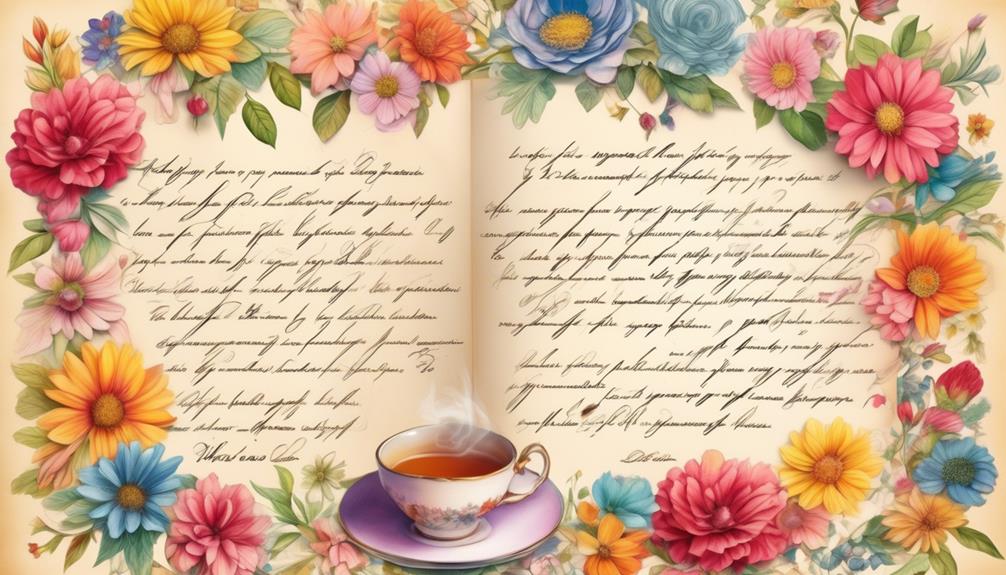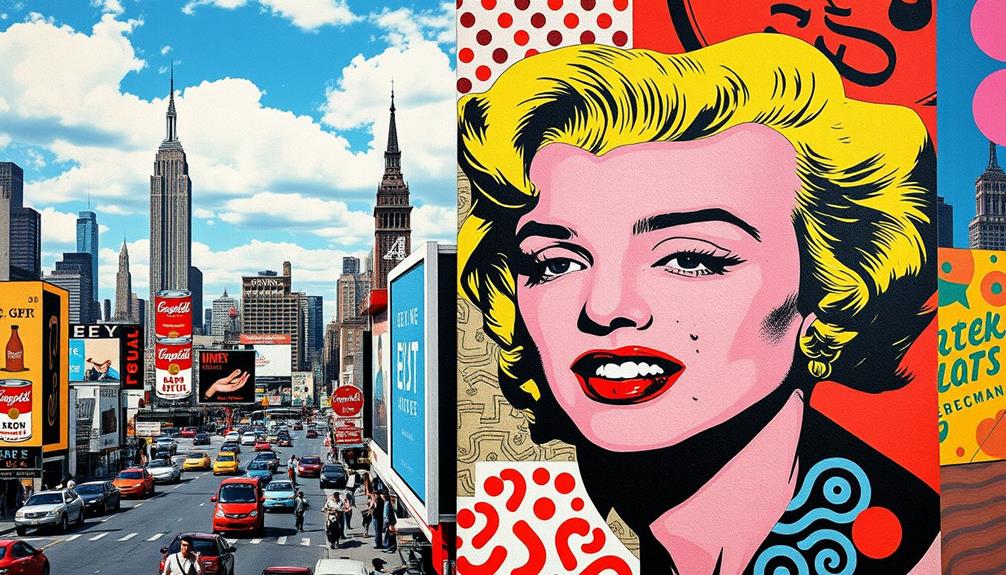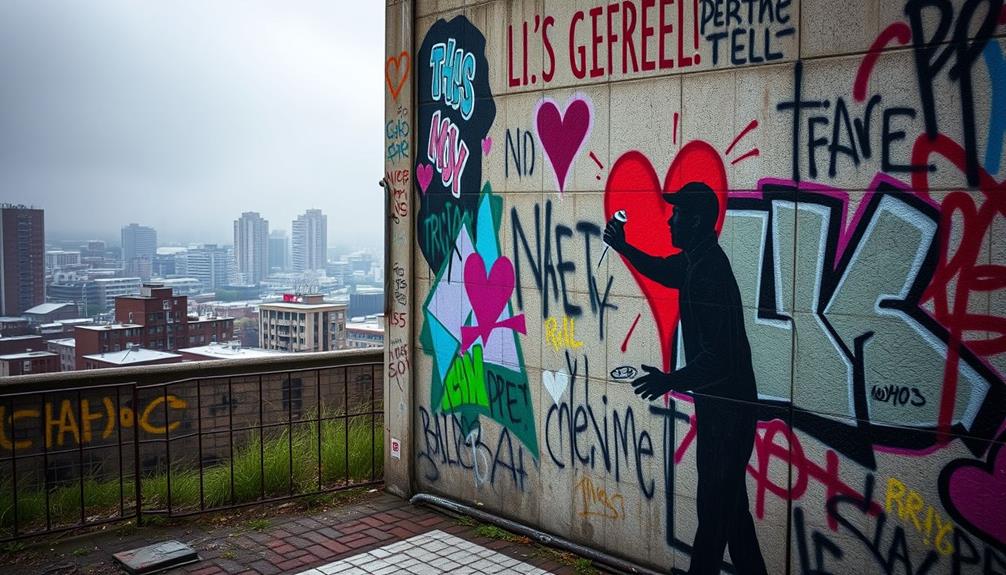We’ve all heard the phrase, ‘knowledge is power,’ and when it comes to addiction, this is particularly relevant. The path to overcoming addiction is frequently filled with obstacles, setbacks, and periods of uncertainty.
Yet, within this collection of addiction quotes, there lies a reservoir of wisdom, hope, and resilience that can serve as a guiding light for those struggling with addiction. These quotes offer more than just words on a page; they provide a glimpse into the experiences of those who have faced similar battles and emerged victorious.
So, how can these quotes and comments offer solace and motivation to individuals navigating the complexities of addiction?
Addiction Quotations
- “The mentality and behavior of drug addicts and alcoholics are wholly irrational until you understand that they are completely powerless over their addiction.” – Russell Brand
- “Addiction begins with the hope that something ‘out there’ can instantly fill up the emptiness inside.” – Jean Kilbourne
- “The opposite of addiction is not sobriety, it’s connection.” – Johann Hari
- “Recovery is not for people who need it, it’s for people who want it.” – Anonymous
- “Addiction is a family disease. One person may use, but the whole family suffers.” – Unknown
- “I used to think a drug addict was someone who lived on the far edges of society. Wild-eyed, shaven-headed and living in a filthy squat. That was until I became one…” – Cathryn Kemp
- “Not all addictions are rooted in abuse or trauma, but I do believe they can all be traced to painful experience.” – Gabor Maté
- “The first step towards getting somewhere is to decide you’re not going to stay where you are.” – J.P. Morgan
- “Recovery is hard. Regret is harder.” – Brittany Burgunder
- “No one is immune from addiction; it afflicts people of all ages, races, classes, and professions.” – Patrick J. Kennedy
- “All the suffering, stress, and addiction comes from not realizing you already are what you are looking for.” – Jon Kabat-Zinn
- “At first, addiction is maintained by pleasure, but the intensity of this pleasure gradually diminishes and the addiction is then maintained by the avoidance of pain.” – Frank Tallis
- Every form of addiction is bad, no matter whether the narcotic be alcohol, morphine or idealism.” – Carl Jung
- “Addiction is the only prison where the locks are on the inside.” – Unknown
- “Sobriety was the greatest gift I ever gave myself.” – Rob Lowe
- “Sometimes you can only find Heaven by slowly backing away from Hell.” – Carrie Fisher
- “One of the hardest things was learning that I was worth recovery.” – Demi Lovato
- “Recovery is an acceptance that your life is in shambles and you have to change it.” – Jamie Lee Curtis
- “Addiction doesn’t kill the addict. It kills the family, kids and people who tried to help!” – Unknown
- “It is impossible to understand addiction without asking what relief the addict finds, or hopes to find, in the drug or the addictive behavior.” – Gabor Maté
- “Drugs are a bet with your mind.” – Jim Morrison
- “The priority of any addict is to anaesthetize the pain of living to ease the passage of day with some purchased relief.” – Russell Brand
- “My recovery must come first so that everything I love in life doesn’t have to come last.” – Unknown
- We do not heal the past by dwelling there; we heal the past by living fully in the present.” – Marianne Williamson
- “I really mean when I say my biggest fear in early recovery was that I would never have fun again.” – Tom Stoddart
- “One of the things you realize in recovery is that you’re not the only one.” – Daniel Baldwin
- “Rock bottom became the solid foundation in which I rebuilt my life.” – J.K. Rowling
- “I am not defined by my relapses, but by my decision to remain in recovery despite them.” – Unknown
- “I hated every minute of training, but I said, ‘Don’t quit. Suffer now and live the rest of your life as a champion.'” – Muhammad Ali
- “Addiction is a monster; it lives inside, and feeds off of you, takes from you, controls you, and destroys you. It’s a beast that tears you apart, piece by piece.” – Heroin
- “The road to sobriety is not linear. It is a journey of twists and turns, peaks and valleys.” – Unknown
- “Sometimes the strength of recovery is discovered in the vulnerability of sharing your story.” – Unknown
- “My identity shifted when I got into recovery. That’s who I am now, and it actually gives me greater pleasure to have that identity than to be a musician or anything else.” – Eric Clapton
- “You were never created to live depressed, defeated, guilty, condemned, ashamed or unworthy. You were created to be victorious.” – Unknown
- “Addiction is giving up everything for one thing. Recovery is giving up one thing for everything.” – Unknown
- “It’s not the drugs that make a drug addict. It’s the need to escape reality.” – Unknown
- “I know you’re tired. I know you feel like giving up, but you’re not going to. You know why? Because you are strong, and when you’re weak, you’re strong.” – Unknown
- “Getting sober was one of the three pivotal events in my life, along with becoming an atheist and leaving my traditionalist upbringing.” – George Carlin
- “I understood, through rehab, things about creating characters. I understood that creating whole people means knowing where we come from, how we can make a mistake and how we overcome things to make ourselves stronger.” – Samuel L. Jackson
- “The best time to plant a tree was 20 years ago. The second best time is now.” – Chinese Proverb
- “Hope is a good thing, maybe the best of things, and no good thing ever dies.” – Stephen King
- “I am not what happened to me, I am what I choose to become.” – Carl Jung
- “There is no shame in beginning again, for you get a chance to build bigger and better than before.” – Unknown
- “It’s a lifelong journey of finding the truth that sets us free.” – Unknown
- “When everything seems like an uphill struggle, just think of the view from the top.” – Unknown
- “In recovery, the words ‘I need help’ are not a sign of weakness, but a sign of strength.” – Unknown
- “Recovery is an ongoing process, for both the addict and his or her family. In recovery, there is hope. And hope is a wonderful thing.” – Dean Dauphinais
- “Courage isn’t having the strength to go on – it is going on when you don’t have strength.” – Napoleon Bonaparte
- “Addiction is a very lonely disease. You’re isolated, and a big part of the recovery is connecting with other people.” – Tracey Helton
- “What lies behind us and what lies before us are tiny matters compared to what lies within us.” – Ralph Waldo Emerson
Key Takeaways
- Addiction quotes provide motivation, solace, and hope in the journey of addiction.
- Inner strength and resilience are crucial in coping with addiction.
- Recovery is a process that requires acceptance, change, and seeking support.
- Quotes emphasize the importance of progress, perseverance, and creating a brighter future in recovery.
Powerful Quotes for Overcoming Addiction
We draw inspiration from powerful quotes that embody the strength and determination needed to overcome addiction. These addiction recovery quotes serve as guiding lights, reminding us that resilience and perseverance are vital in the journey towards emotional sobriety.
Russell Brand and Tess Callahan’s insights into addiction as a coping mechanism shed light on the underlying pain and discomfort that individuals may seek to alleviate through addictive behaviors. Their words resonate deeply, acknowledging the complexity of addiction and the need for accessible addiction treatment.
Additionally, Demi Lovato and Benjamin Alire Sáenz’s emphasis on taking recovery one day at a time underscores the gradual nature of the healing process. Their quotes provide a sense of hope, highlighting the incremental progress that’s achievable.
Furthermore, the wisdom of Mahatma Gandhi, Friedrich Nietzsche, and Helen Keller encourages individuals to tap into their inner strength and resilience, fostering a mindset geared towards overcoming addiction.
These powerful quotes remind us that change is possible, and that the journey towards recovery is fueled by determination and the belief in a new beginning.
Wisdom and Encouragement for Addiction Recovery

Navigating addiction recovery requires resilience, self-reflection, and a commitment to personal growth. It’s a journey filled with trials and suffering, but also with opportunities for transformative change. Here are some motivational quotes to provide wisdom and encouragement for those on the path to recovery:
| Motivational Quotes for Addiction Recovery |
|---|
| “Recovery is hard. Regret is harder.” – Brittany Burgunder |
| “The only person you are destined to become is the person you decide to be.” – Ralph Waldo Emerson |
| “The greatest glory in living lies not in never falling, but in rising every time we fall.” – Nelson Mandela |
| “It does not matter how slowly you go as long as you do not stop.” – Confucius |
These quotes serve as reminders that overcoming addiction is a journey that requires perseverance and self-compassion. They offer wisdom that resonates with those in recovery, reminding them that setbacks are part of the process, but what truly matters is the commitment to keep moving forward. As we continue on the path of recovery, let these words provide the encouragement and strength needed to embrace personal growth and healing.
Insightful Quotes on Dealing With Addictions

Striving for recovery from addiction requires seeking wisdom and solace in insightful quotes that offer guidance and strength. Dealing with addiction can be a daunting journey, but finding inspiration in powerful quotes can provide the motivation needed to persevere. As we navigate the complexities of addiction, insightful quotes can serve as beacons of hope, reminding us that we aren’t alone in our suffering and that there’s a path to recovery.
Quotes such as ‘The first step towards getting somewhere is to decide that you aren’t going to stay where you are’ can ignite the determination needed to break free from the chains of addiction. These words resonate deeply, reminding us that change is possible and that we’ve the power to shape our own destinies.
Additionally, ‘Recovery is an acceptance that your life is in shambles and you have to change it’ sheds light on the reality of addiction while offering a roadmap for reclaiming control.
In moments of doubt and struggle, these insightful quotes can provide the fortitude to continue the journey towards recovery. They offer profound insights into the nature of addiction and the resilience of the human spirit, serving as beacons of hope in our darkest moments.
Coping With Being Addicted: Quotes and Comments

We understand the struggles of overcoming addiction and the importance of seeking support and help from others.
It’s essential to find inner strength and resilience to navigate the challenges of addiction and recovery.
Let’s explore some insightful quotes and comments that can provide the motivation and encouragement needed to cope with being addicted.
Overcoming Addiction Struggles
Dealing with addiction is a challenging journey that requires resilience, determination, and the belief in the possibility of a rewarding life beyond addiction.
Overcoming addiction struggles is an experience of trial and perseverance. As a recovering addict, I’ve learned that overcoming things to make whole people means embracing the process of recovery as a day-by-day approach. It involves finding strength and resilience in the face of adversity. It’s about accepting that the symptoms of distress are part of the journey but don’t define the destination.
Creating a new, rewarding life involves acceptance and change. Seeking inspiration from addiction quotes and others’ recovery stories can provide motivation and support. Recovery is about progress, not perfection, and understanding that it’s a process that takes time and commitment.
Seeking Support and Help
As we navigate the journey of overcoming addiction struggles, seeking support and help becomes an essential pillar in our path to recovery.
Here are some motivational words about seeking support and help:
- ‘I needed help, and that’s what I did. I sought out the help I needed to rebuild my life.’
- ‘Seeking support doesn’t make you weak; it makes you brave enough to acknowledge your need for help.’
- ‘Surround yourself with people who understand your struggle and are willing to support you on your journey to recovery.’
- ‘There is strength in reaching out for help. You don’t have to face addiction alone.’
These quotes remind us that seeking support and help is a courageous step towards healing and rebuilding a life free from addiction.
Finding Inner Strength
Coping with addiction demands an inner strength that empowers individuals to confront their struggles with resilience and determination. As we navigate the trials of addiction, it’s essential to draw strength from within.
As one quote wisely puts it, ‘Strength doesn’t come from winning. Your struggles develop your strengths. When you go through hardships and decide not to surrender, that’s strength.’ This inner strength forms the bedrock of recovery, providing the solid foundation upon which a brand new start can be built.
It’s about acknowledging the suffering caused by addiction and using it as fuel to propel ourselves towards a brighter future. In the words of another insightful quote, ‘Strength is the capacity to break a Hershey bar into four pieces with your bare hands – and then eat just one of the pieces.’
This inner strength enables us to persevere through the toughest of times and emerge victorious in the battle against addiction.
Finding Strength and Hope in Addiction Quotes

As we explore the powerful impact of addiction quotes, we’re reminded of the resilience and strength that can be found in the midst of addiction struggles.
These quotes serve as beacons of hope, inspiring individuals to embark on their journey to recovery with courage and determination.
Through these words, we find stories of triumph and inner resilience that offer solace and motivation in the face of addiction.
Overcoming Addiction Struggles
Navigating through addiction struggles can be a daunting and challenging journey, but finding strength and hope in addiction quotes can provide the motivation and inspiration needed to overcome them.
Here are some ways addiction quotes can help in overcoming struggles:
- Perspective: Addiction quotes can offer a fresh perspective on the struggle, helping us understand that overcoming addiction is possible.
- Encouragement: Inspirational addiction quotes can provide encouragement during tough times, reminding us that we’ve the strength to persevere.
- Learning from Mistakes: Quotes about addiction can help us learn from past mistakes, turning them into valuable lessons for the future.
- Empowerment: Addiction quotes can empower individuals to take control of their suffering and work towards recovery with determination and strength.
Inspiring Recovery Stories
Finding strength and hope in addiction quotes has the power to uplift and inspire individuals on the path to recovery. As we navigate the journey of recovery, we often encounter suffering and setbacks. However, hearing inspiring recovery stories from others who’ve battled addiction can ignite a sense of hope within us.
It reminds us that we aren’t alone in our struggles and that it’s possible to overcome the challenges of addiction. These stories serve as a testament to the resilience of the human spirit, showing that recovery isn’t just about overcoming a mistake but about finding the strength to create a new and fulfilling life.
They inspire us to keep moving forward, one step at a time, and to believe in the possibility of a brighter future. In these moments, addiction quotes become more than just words; they become beacons of hope guiding us through the darkness.
Finding Inner Resilience
Inspirational recovery stories from individuals who’ve battled addiction serve as beacons of hope, guiding us through the darkness and igniting a sense of inner resilience as we encounter setbacks and suffering on the path to recovery.
When seeking inner resilience in addiction quotes, we find that:
- Understanding Suffering: Acknowledging the pain and hardship of addiction helps cultivate inner strength and resilience.
- Learning from Trials: Overcoming addiction involves facing trials and learning from them, fostering resilience and growth.
- Building Strength Through Perseverance: Each step taken in recovery, despite challenges, reinforces inner strength and resilience.
- Seeking Support: Connecting with others and seeking help in times of trial can bolster resilience and provide strength in the face of addiction.
Finding inner resilience in addiction quotes empowers us to navigate the trials of recovery with strength and perseverance.
Inspirational Quotes for Those Struggling With Addiction

Struggling with addiction can often feel like an overwhelming and isolating experience, but the wisdom contained in these quotes offers a beacon of hope and strength for those in need of inspiration.
As we navigate the complexities of addiction, quotes from Russell Brand, Tess Callahan, Johann Hari, Frank Tallis, and other insightful individuals shed light on addiction as a coping mechanism for pain and trauma. Their words remind us that we aren’t alone in our struggles and that there’s a path to healing and recovery.
Additionally, the inspirational words of Demi Lovato, Benjamin Alire Sáenz, Vince Lombardi, Mahatma Gandhi, Friedrich Nietzsche, and Helen Keller emphasize the importance of taking recovery one day at a time and finding strength and resilience throughout the process.
These quotes inspire a fresh start and the possibility of creating a new ending, echoing the sentiments of Carl Bard, Chinese Proverb, Nelson Mandela, Henry Ford, and Ralph Waldo Emerson. They serve as a source of motivation for those dealing with addiction, offering hope, encouragement, and a reminder that change and acceptance are integral parts of the recovery journey.
Frequently Asked Questions
What Are Some Sayings About Addiction?
Some sayings about addiction emphasize the journey of recovery. It’s about progressing, not striving for perfection, and taking it one day at a time. We believe every small effort counts, and resilience is built in the process.
Overcoming addiction requires strength and creating a new, rewarding life. It’s a personal choice, and we must believe in our worthiness of recovery. Recovery is about accepting change and embracing the power to start anew.
What Is Addiction at Its Worst Quote?
At its worst, addiction is a relentless cycle of pain and desperation. It’s like being trapped in a maze, constantly seeking relief but only falling deeper into the trap. The intensity of pleasure diminishes, and all that’s left is the avoidance of pain.
It’s not a choice; it’s a way of denying the overwhelming pain of living. We all have that hole to fill, and addiction becomes the misguided attempt to ease the passage of each day.
What Is a Good Sentence for Addiction?
We understand the struggle of addiction and the power it holds over individuals.
Overcoming addiction is a journey that requires dedication, support, and self-awareness.
It’s important to prioritize our physical and mental wellbeing while focusing on creating a fulfilling life.
Each day brings new opportunities for growth and change.
Recovery demands resilience and strength, but it’s possible to start fresh and create a new ending at any point in life.
What Are Some Inspiring Quotes for Recovery?
Here are some inspiring quotes for recovery:
‘Every day may not be good, but there’s something good in every day.’ – Alice Morse Earle.
‘The only person you’re destined to become is the person you decide to be.’ – Ralph Waldo Emerson.
‘Believe you can and you’re halfway there.’ – Theodore Roosevelt.
‘We may encounter many defeats, but we mustn’t be defeated.’ – Maya Angelou.
Conclusion
In the journey of addiction recovery, these quotes serve as beacons of light, guiding us through the stormy seas of temptation and struggle. They’re like a sturdy lifeboat, offering hope and strength to those lost at sea, helping them navigate their way to the shores of sobriety.
With these powerful words as our compass, we can steer our lives towards a new horizon, leaving behind the turbulent waters of addiction and embracing the calm, steady rhythm of recovery.
Joy, as our Editor in Chief, ensures the highest standard of content. Her talent in writing is complemented by her attention to detail and passion for literature and culture. Joy’s expertise and love for the English language shine through in her editorial work, making each piece a testament to quality and clarity.










